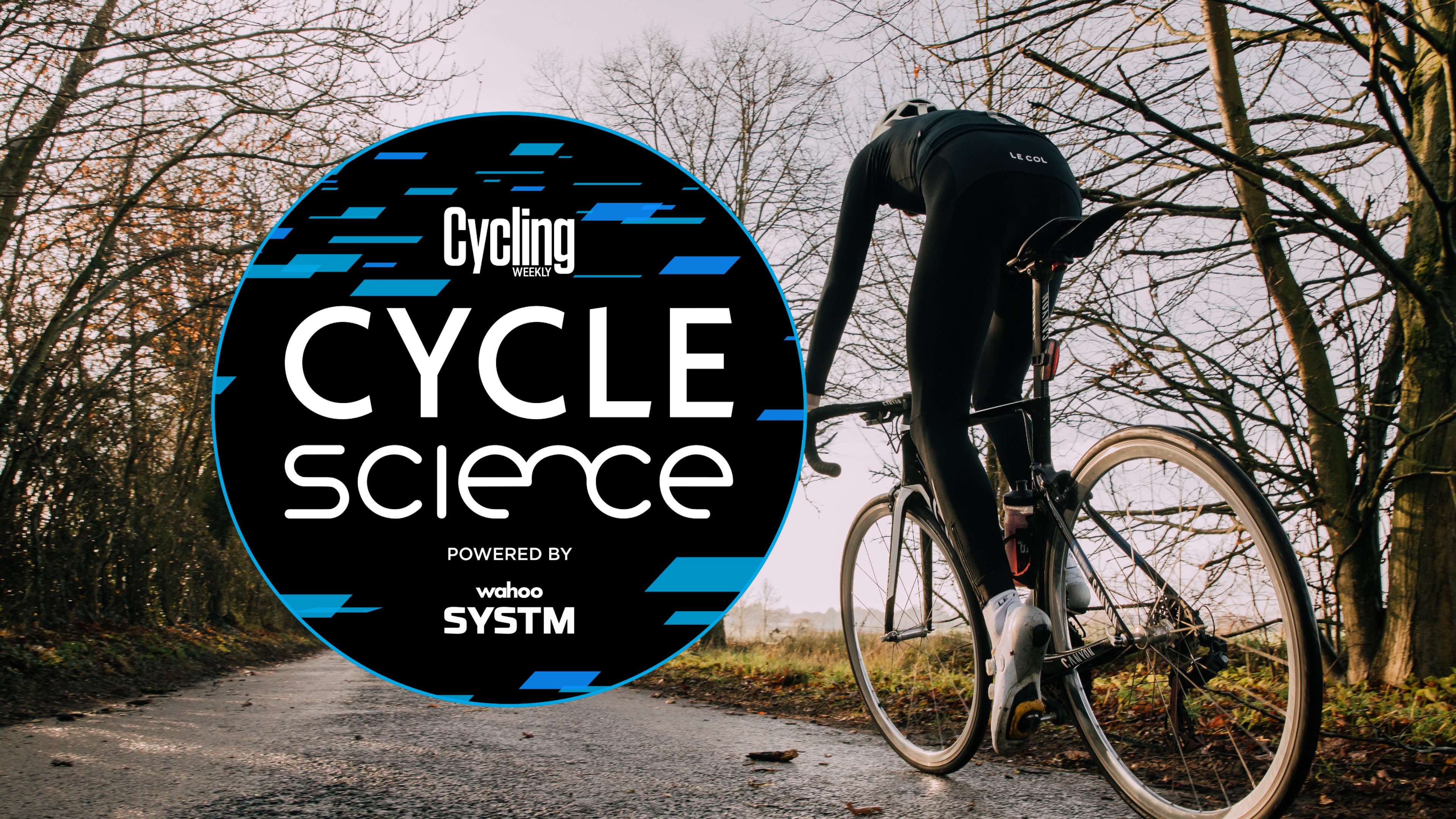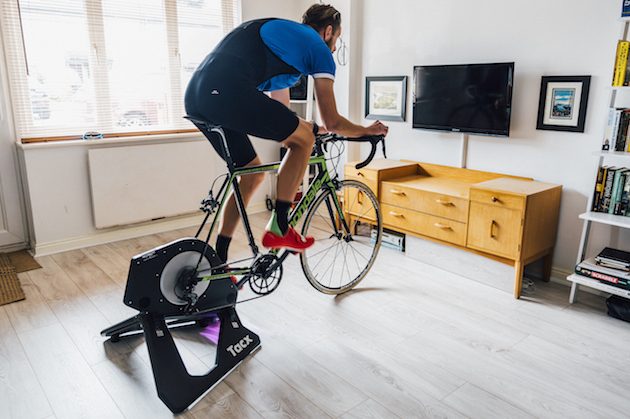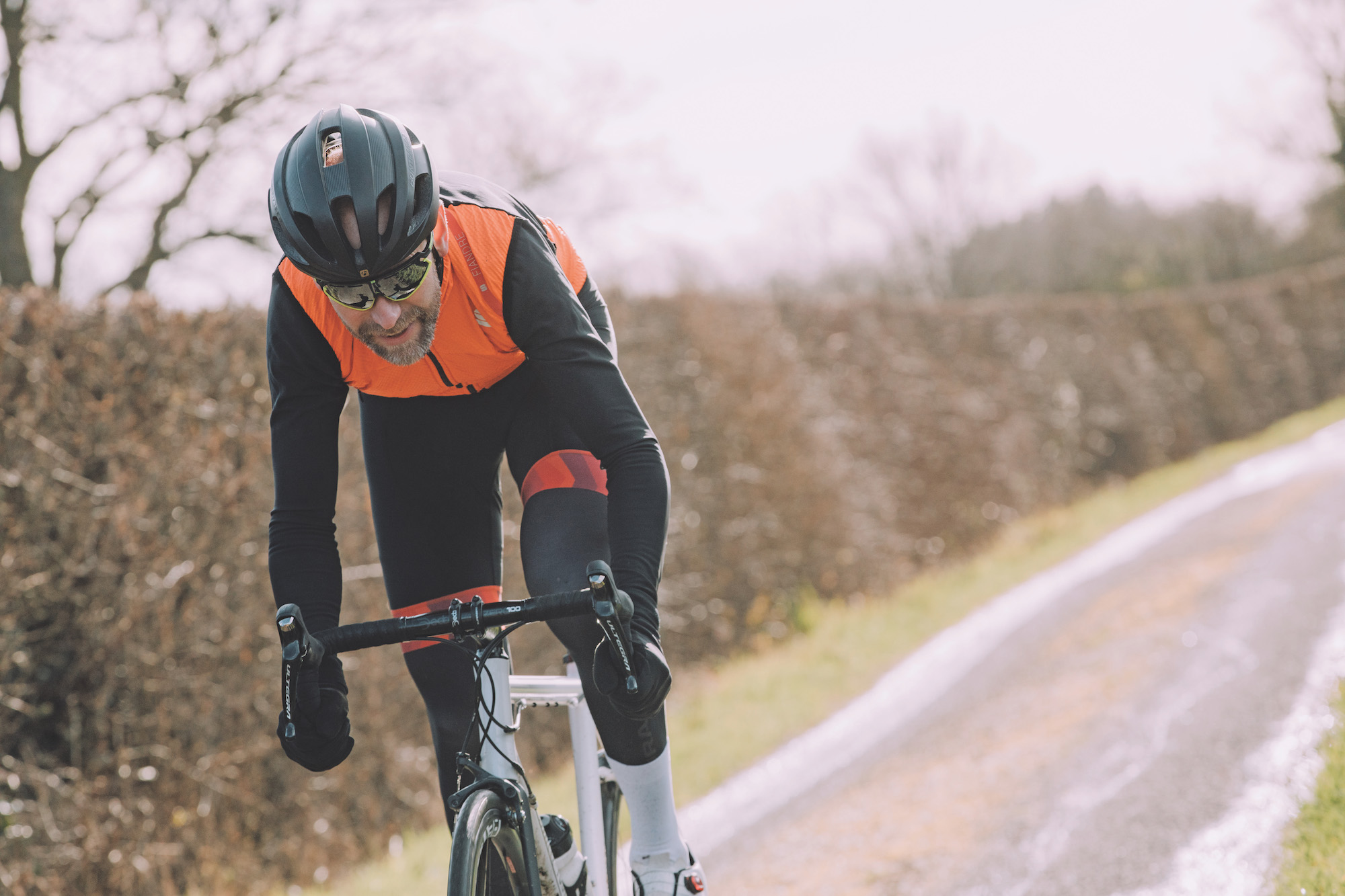Should you ditch long, slow winter miles? Reverse periodisation says yes
Conventional wisdom has it that winter is the time for long, slow miles — but more and more riders are doing precisely the opposite. Simon Smythe investigates reverse periodisation


This content is part of a paid partnership with Wahoo. The contents of this article are entirely independent and solely reflect the editorial opinion of Cycling Weekly.
The traditional club cyclist’s year used to be governed by a strict set of rules. You started training on January 1, at least a stone overweight after the club dinner season followed by Christmas. You stayed in the little ring for the whole of January as you started building your base fitness again from scratch.
When you’d done the requisite base mileage, you were ready to start intervals, and after 2,000km (1,243 miles), you were ready to race again. The received wisdom held that you first needed to build a broad, strong base for your training pyramid, before you added any intensity and finally topped it off with your sprinting.
So why do modern riders and coaches seem to be turning the pyramid upside down, following programmes of intervals and racing on Zwift through December and January and only starting their endurance rides once the sun comes out? It’s being called ‘reverse periodisation’ — but what does that really mean and how do you implement it? More importantly, can it get you the same results as doing things the traditional way?
Coach Dr Auriel Forrester (scientific-coaching.com) is former head of the sport, exercise and biomedical sciences department at the University of Luton and a UCI Masters world champion.
Long before the raft of indoor training platforms we now have arrived, she and fellow coach Dave Le Grys devised SpinDoctor, an innovative indoor training programme that aimed to encourage structured indoor training.
"People are getting more time-constrained," says Dr Forrester. "Whether it’s the right thing or the wrong thing to do, going out for a six-hour Sunday club run isn’t going to happen. For a long time now, there’s been a trend towards more indoor training in the wintertime. The roads aren’t safe to go out training at night, and chaingangs barely exist anymore."
Get The Leadout Newsletter
The latest race content, interviews, features, reviews and expert buying guides, direct to your inbox!
As well as indoor training being safer than heading out on dark, potholed, traffic-choked roads, it can also protect your hard-earned form, as Forrester explains: "There’s a lot to be said for continuing your top-end speed and power training through the winter months so that you don’t lose it and have to go back to square-one."
Detraining doesn’t occur evenly across all levels of your fitness. "If you stop training, the first thing you lose is your top-end speed and power - the hardest things to get back. The next-hardest thing to pick back up is your threshold."
Easier to regain is your base fitness, by means of longer, slower rides — which are more fun in nicer weather. "As long as the weather’s nice, your bike-fit is right and you get your fuelling right," says Forrester, "you can now go out and do a longer ride."
Pyramid paradigm shift

The important point is, top-end fitness must still be underpinned by a base of solid endurance.
"The old-style analogy of the pyramid does still hold true," adds Forrester. "You need the broad base, and to get the point any higher, you have to add a bit more to each layer. But as I see it, the pyramid is made of little bricks that don’t have to be added from the bottom-up."
Modern training software can help you reconceptualise that all-important pyramid, as Forrester explains: "You can go on to Training Peaks and view your different layers of the pyramid on a bar chart, which you can colour in however you like — colouring in rather than building it from the bottom. As long as it stays in balance, it doesn’t matter."
Of course, you need to ensure that your pyramid is sturdy and that all elements are in place prior to target events. "If you’ve only filled in the top bit and it ends up without a base, you’ve got something that looks more like a Christmas tree — catch the flu and it will snap. So as long as you’re achieving your base prior to your event and your pyramid doesn’t get too top-heavy, exactly how you build it is less important."
As with the traditional training macrocycle - the whole training year - hard blocks of training and racing must be bookended by effective recovery.
"Make sure you’ve had enough rest and recovery," says Forrester. "You might have to back off a bit to release some of the metabolic ‘poisons’ from the cumulative overtraining of the previous season."
Looking at the science
Because top-end fitness is lost first, followed by peak aerobic power, reverse periodisation addresses the biggest losses first — you start with the elements that are hardest to regain.
In a 2016 Norwegian study into reverse periodisation by Oystein Sylta et al, 63 male cyclists were randomised to three training groups and instructed to follow a 12-week training programme consisting of 24 interval sessions, a high volume of low-intensity training, and laboratory testing.
The increasing-intensity group performed interval training as four times 16 minutes in weeks one to four, four times eight minutes in weeks five to eight, and four times four minutes in weeks
nine to 12. The decreasing- intensity group performed interval sessions in the opposite order to the increasing-intensity group, and the mixed-intensity group performed the intervals in a mixed distribution.
Pre- and post-trial, the riders were tested for mean power during a 40-minute all-out time trial and peak power output during incremental testing to exhaustion, VO2peak, and power at 4mmol/L lactate. The researchers found that all three groups improved by five to 10 per cent in mean power during the all-out trial, peak power output, and VO2peak post-intervention.
There were no adaptation differences, prompting the conclusion: "Organising different interval sessions in a specific order or in a mixed distribution during a 12-week training period has little or no effect on training adaptation when the overall training load is the same."
Time-efficient training

So it would seem that while reverse periodisation doesn’t have any actual drawbacks, it might not have huge benefits either. However, doing high-intensity sessions indoors could have another advantage, according to Forrester: "When you’re riding indoors, there’s no freewheeling, there’s less recovery and you can get the same training stress score in a shorter period of time so the average intensity is higher."
Forrester believes it can take considerably longer when riding outdoors to rack up the same volume of high-intensity effort.
"When I view my riders’ files on a weekend where, because the weather was bad, they’ve randomly ridden around Central Park [on Zwift] but kept within the power band of the outdoor session they’d been prescribed… the amount of recovery time in Zone 1 is 10 per cent. Look at the same rider out on the road and it’s 24 per cent. So it’s a shorter but harder session indoors."
On this basis, reverse periodisation works physiologically and is more time-efficient. Dr Forrester points out one final benefit that is not so easily pinpointed: "Very often, for a rider who’s been doing the same thing year after year, as soon as they do something different, they improve. Just applying a different set of training stresses to your body will stimulate it to adapt in a different way."
Kevin Poulton oversees the Zwift Academy programme and famously coached Mat Hayman to victory at Paris-Roubaix in 2016 using Zwift. The Australian rider had broken his arm six weeks before the race.
"With an increasing number of athletes turning to indoor training for their early-season base training, there has definitely been an increase in the interest and implementation of reverse periodisation. This has largely come about because of the style of riding that indoor training encourages.
"It is much easier to motivate the athlete during their early season base training with some structured sessions, along with a mix of group rides and racing indoors. Reverse periodisation also suits riders who compete more regularly."
But does reverse periodisation yield the same end result?
"Reverse periodisation implements shorter, more intense training during the winter. Because these higher-intensity intervals are short in duration, the ‘cost’ of these efforts is low. You recover quickly from multiple bouts of 30 seconds at your FTP setting. Science has also proven that we can achieve big gains in endurance from shorter training sessions.
"As an example, if you were to ride indoors during winter for your early base period, by implementing two structured workouts that included some controlled intensity during the week, along with two group rides at your Zone 1-2 would be the basis of a very good week. If you could add to this structure a longer outdoor ride on the weekend, you would be well on your way to building a good foundation for the season ahead."
So the long outdoor ride is not quite a thing of the past?
"Long, low-intensity rides will always have a place in training. There are big gains to be made by including them in your training. But to achieve these gains requires high volume. A good, low-intensity ride really needs to be two hours-plus to be effective."
Evidently, professional riders who have the time should still do the long, slow endurance rides, whereas those of us with family and non-cycling jobs who can only commit eight hours a week to training are better off upping the intensity. However, with the expanded professional racing calendar, many pros no longer have time for the traditional model.
"Many pros now include some form of intensity early in the season. Traditional linear periodisation can involve long periods of training before racing begins. But many athletes are required to race within five to six weeks after returning back to training from their winter break. Reverse periodisation allows them to include the right amount of structured intensity to prepare for the early races, while still building a solid aerobic base for the year ahead."
Matt Bottrill, the former national time trial champion who now runs Matt Bottrill Performance Coaching, has been working with Lotto-Soudal this winter. He suggests that traditional winter training is becoming redundant as coaches and riders use smarter training tools to achieve the same gains. Bottrill also favours an individualised approach, looking at an athlete’s strengths and weaknesses as well as their target events, and building a training programme that makes best use of their training time.
"In the first phase, after the season has ended, we do go back and do some base miles, but in the first week we’re starting to introduce tempo blocks, strength work, hill reps. We’ll be building intensity and threshold. After six weeks, we’ll go into much shorter intervals - 30/30s or 20/40s - short blocks of them.
"The sport is evolving. What we’ve found is you can look at a power profile and you work out how to get the biggest adaptation from an athlete. The old-school approach where you’ve got to do base miles no longer applies even in professional cycling. Science is taking over."
Directed by feedback
Bottrill points out that one of the reasons for long miles - to develop pedalling efficiency - can instead be learnt quickly and much more easily by using Wattbike’s Pedalling Effectiveness Score software.
"Instead of practising pedalling for 10,000 hours before you become an expert, we’re looking at incorporating drills — and that’s where the Wattbike PES comes into its own. If you’re more efficient, you can produce the same power for less energy. Now all our athletes do pedalling efficiency drills in training, building gradually in their race position. It’s got to be about training your body for the specific demands of your racing; the days of just going out for long, slow winter rides are over."
And it’s not only long, slow riding that is under scrutiny. "We’re even finding that some of the traditional interval sessions are too long. For example, with the time triallist’s favourite — five times five minutes at Zone 5 — we’ve found that, for the last two minutes of each rep, if you’re not efficient because you can’t keep correct form on the bike, the adaptation from the muscle you should get is wasted.
"You’re better off doing shorter — eight times three minutes — and you’ll get the full activation from it. This is what I’ve been doing in my own training. There are devices out there now from Leomo [which tracks biomechanics] and Wattbike to measure it. I do think the next phase of power meters is all going to be about not just how much power is being produced but how efficiently."

Thank you for reading 20 articles this month* Join now for unlimited access
Enjoy your first month for just £1 / $1 / €1
*Read 5 free articles per month without a subscription

Join now for unlimited access
Try first month for just £1 / $1 / €1
Simon Smythe is a hugely experienced cycling tech writer, who has been writing for Cycling Weekly since 2003. Until recently he was our senior tech writer. In his cycling career Simon has mostly focused on time trialling with a national medal, a few open wins and his club's 30-mile record in his palmares. These days he spends most of his time testing road bikes, or on a tandem doing the school run with his younger son.
-
 'It took everything' - Puck Pieterse outclimbs Demi Vollering to win La Flèche Wallonne
'It took everything' - Puck Pieterse outclimbs Demi Vollering to win La Flèche WallonneDutch 22-year-old shows Classics pedigree with first one-day victory
By Tom Davidson
-
 Tadej Pogačar flies to dominant victory at La Flèche Wallonne
Tadej Pogačar flies to dominant victory at La Flèche WallonneSlovenian takes second win at Belgian classic ahead of Kévin Vauquelin and Tom Pidcock
By Tom Thewlis
